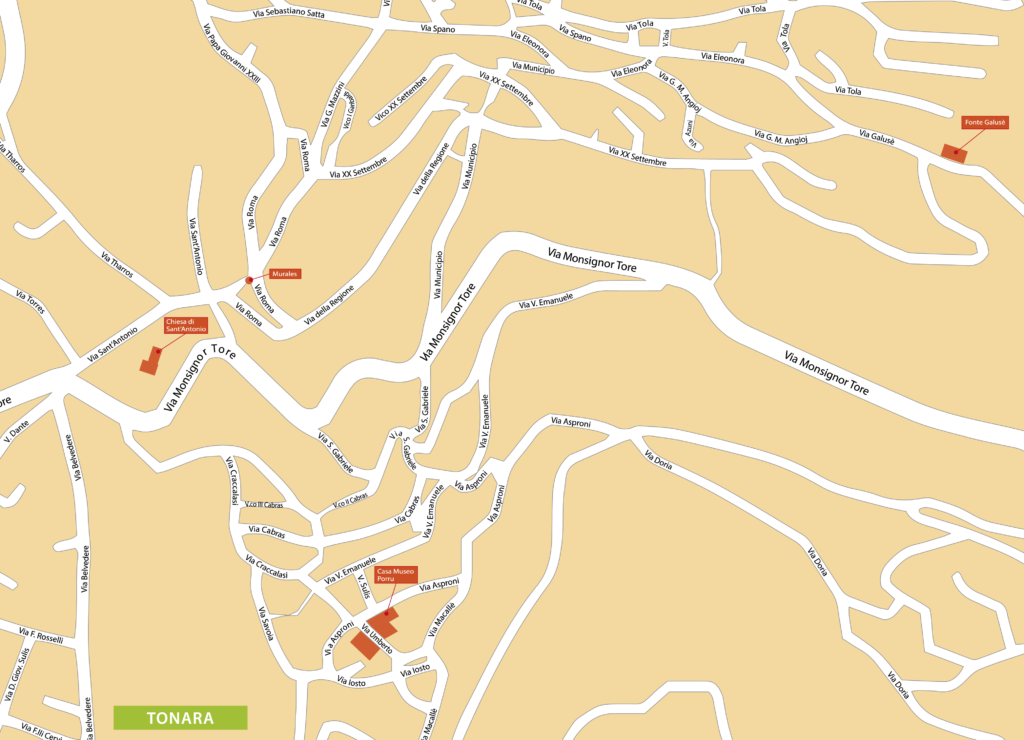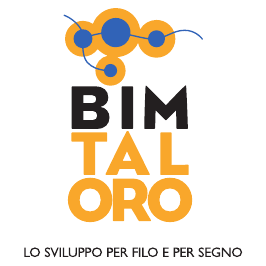Galusè Spring
The Galusè spring, in the district of Arasulè, is about 950 metres above sea level and overlooks the S’Isca valley and the districts of Toneri and Su Pranu. From Galusè a path leads to the village of Desulo, but also the summit of Bruncu Perdu Frau (1480 m) and Conca Giuanni Fais (1496 m). The spring has two openings and there is also an old wash tub nearby. The origin of its name is still unclear: its toponym comes from old Sardinian gal-/cal- meaning “water drain”. The date of construction of the fountain is unknown.
Galusè is far from being the only fountain in the Tonara area – in fact, there are five more in the same district (Funtana Idda, Su Forreddu, Su Tzurru, Igna Mameli, S’Erriu ‘e Su Ponte) supplying pure water. However, Tonara poet Peppino Mereu (1872-1901) chose Galusè as the subject of his poem of the same name, in which a personified version of the spring asks passers-by to stop and listen to his song. Galusè, who is the first-person narrator, talks about his personal virtues and recounts the happy and sad stories of the people that over the years have met at the fountain for love, for fun or for political reasons, or that have come to him to drink, water their animals, find respite from the heat, fill water jugs or wash their clothes. However, the poem is also a vehicle for Peppino Mereu to express his own feelings. The poet, who was shunned by his own community, appears to rely on nature – more specifically on water, the source of life – to forge a bond with his hometown, choosing a place that is ingrained in the history and daily life of the town to be his mouthpiece and voice his thoughts.
At the end of the 1970s, the fountain had been adorned with red trachyte sculptures by Pinuccio Sciola, which today are displayed in different hotspots across the town; the only thing left of the original sculptural complex is a stone that reads «Eo so Galusè, logu delissiosu e de incantu, firma inoghe su pe’ o passizeri, custu est logu santu» (‘I am Galusè, a place of beauty and wonder, do not step forward, for this is a sacred place’),which is the beginning of Mereu’s poem. The structure surrounding the spring, which has recently been made more accessible with a ramp, is painted the same shade of blue as the houses in Tonara. In 1990 it was completely renovated by sculptor Tonino Loi, who added a bas-relief next to the basin depicting, in the lower half, two women washing clothes while surrounded by other washing (some of which is clearly old and patched in places) hung out to dry in the wind; on the right, looking at two stylised lapwings and emerging from the pages of his work, is the unmistakable profile of Peppino Mereu, larger than anything else.
Text by Cecilia Mariani

 BIM TALORO
BIM TALORO